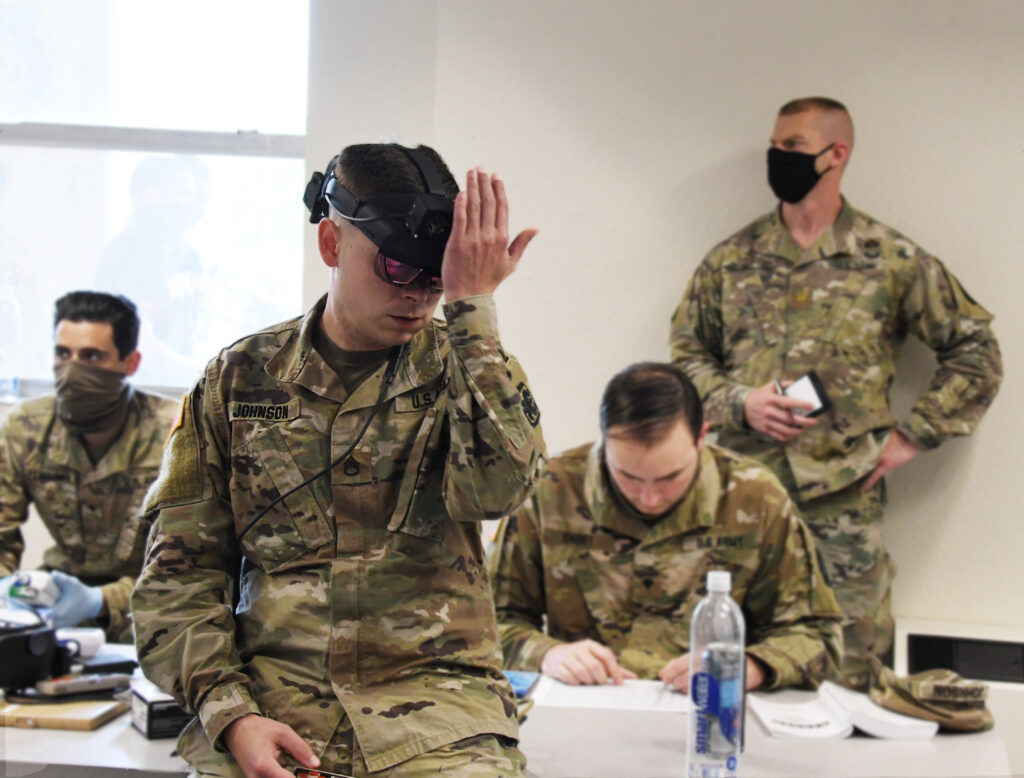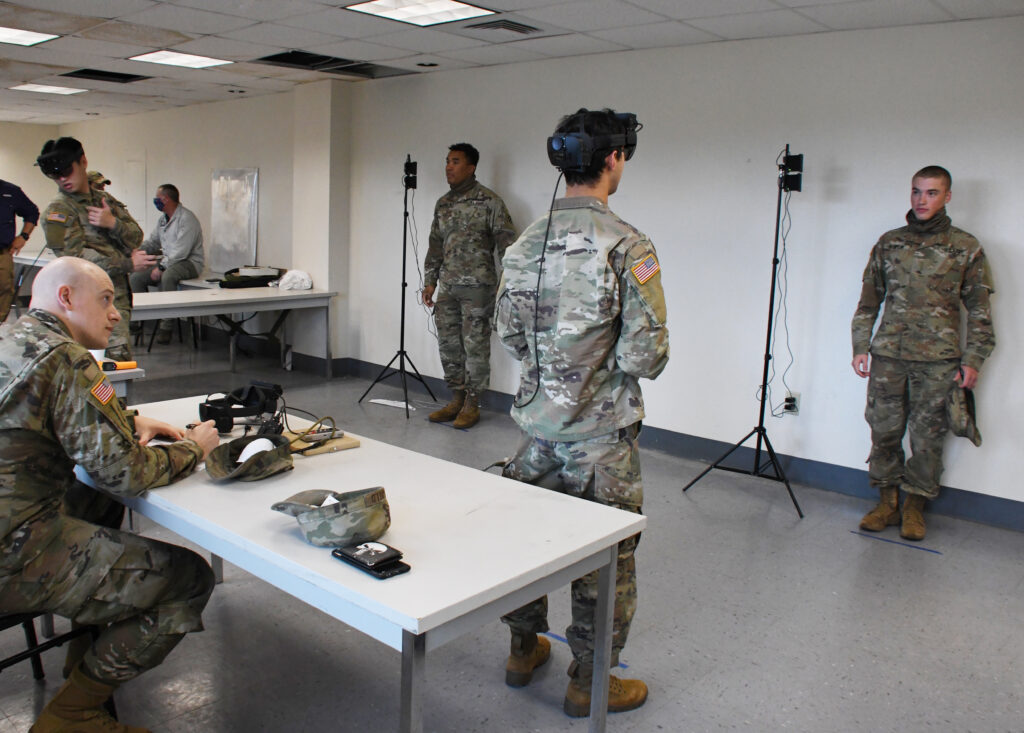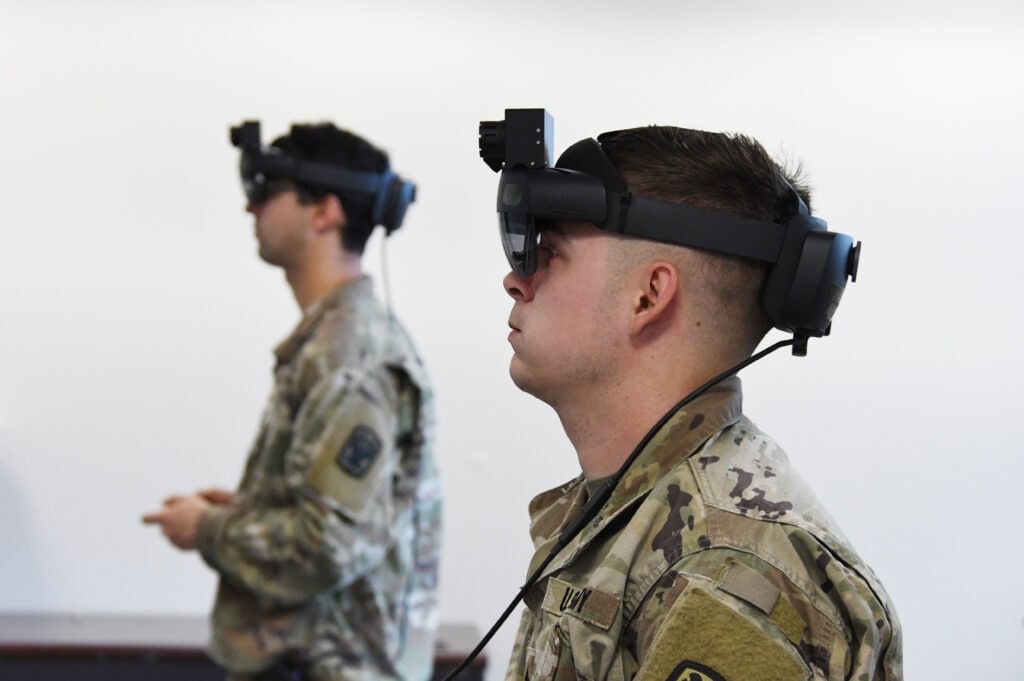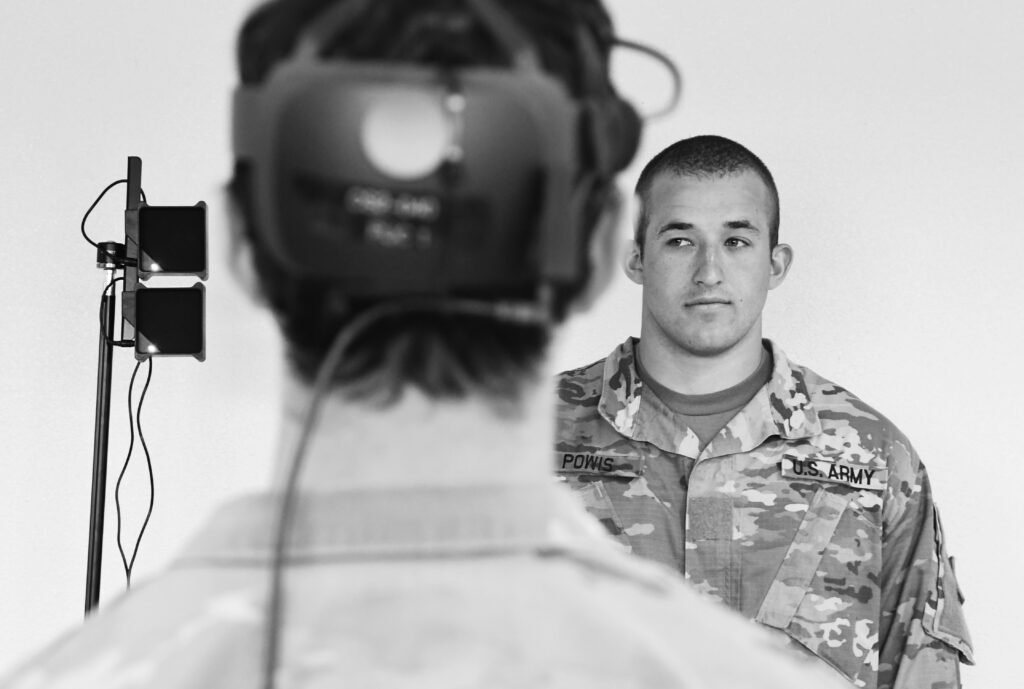
A soldier calibrates his IVAS targeting goggles
WASHINGTON: Hundreds of soldiers at Fort Benning are now getting their temperatures checked using the Army’s prototype targeting goggles. The Army made this latest modification in just four days to the rapidly evolving Integrated Visual Augmentation System. This program shows how quickly the Army can innovate – but it also shows the limits of ad hoc solutions to the global COVID-19 pandemic.
IVAS has been a poster child for the Army’s effort to overhaul its notoriously troubled acquisition system. Instead of a decades-long, multi-billion-dollar development program, this program started just two years ago and is on track, despite the pandemic, to deliver over 40,000 devices to combat troops next year. How? The Army started with an off-the-shelf commercial product, the Microsoft HoloLens, then ran it through round after round of field trials, with soldiers and engineers working side by side to fix problems, make upgrades, and test the changes at a pace that dazzled the general in charge.

Army soldiers use the infrared sensors in their prototype IVAS targeting goggles to take each others’ temperatures as a precaution against COVID-19.
One week ago, according to an Army announcement, the science & technology director on the IVAS project, Tom Bowman of the Fort Belvoir, Va. night vision lab, realized the system’s built-in infrared sensor could be used to read a person’s body temperature from a safe distance. Microsoft engineers made a few adjustments to the software and in those four short days, the first modified IVAS prototypes arrived at Fort Benning.
The quick fix had its limits. It couldn’t cope with temperature fluctuations that occur outdoors, so the Army had to find a big enough indoor space for hundreds of soldiers to troop through for testing while still maintaining six-foot plus of social distance. The Army also decided it was safest to do a quick recalibration of each system after 10 tests to ensure it was reading correctly. Even so, one group of 300 soldiers was processed in less than half an hour.
Now, IVAS is a very partial solution. Yes, taking temperatures at a distance with IVAS or commercially available non-contact thermometers called “temperature guns” is definitely safer than sticking a thermometer in someone’s mouth. But since so many carriers of the COVID-19 coronavirus are asymptomatic – no temperature, no cough, no symptoms at all, yet still capable of infecting others – just checking for elevated temperatures will miss large numbers of cases. It’s no substitute for widespread testing of nasal swabs for viral RNA or of blood samples for antibodies, and even those tests are less than reliable at this early stage of the response.

Soldiers wearing prototype IVAS targeting goggles.
But as long as America remains badly behind on its response, every innovation helps.
What Is IVAS?
The Integrated Visual Augmentation System is one promising piece of a much larger effort to apply high tech to muddy-boots infantry, launched by then-Defense Secretary Jim Mattis, a former Marine rifleman himself. To paraphrase Mattis advisor Robert Scales, a retired Army two-star who earned a Silver Star in Vietnam, why do we spend millions training and equipping fighter pilots that few foes can shoot down, but don’t for the frontline foot troops most likely to be wounded or killed?
IVAS is designed to specifically answer the question: If fighter pilots can fly, navigate, and spot targets with the help of a high-tech Heads-Up Display, why can’t infantry? IVAS will combine a host of new and existing technologies that previously required distinct devices into a single headset:
- Binocular night vision, with both infrared sensors to spot vehicle engines and human body heat – the key to the COVID-19 application – and visual-light intensification.
- A tactical Heads-Up Display that links to the soldier’s gunsight and the unit’s tactical network, superimposing a cross-hairs, compass directions, pointers to objectives and friendly troops, and other data as desired onto their field of vision.
- An on-demand video link to what the unit’s reconnaissance drones are seeing.
- A digital atlas of the planet, updated on demand by mapping drones, to help plan missions in 3D detail.
- An augmented reality training system that lets a soldier “fight” realistic virtual enemies as he moves around real obstacles, like a militarized version of Pokémon Go.
Future upgrades may include artificial intelligence to scan objects the soldier sees, identify them, and automatically report high-priority targets like radars and missile launchers back to higher headquarters. Before IVAS heads into production next year, the Army is also working to ruggedize the system so it can endure hard use in the field and to secure it against electronic and cyber attack.

The back of the IVAS headset.
Move over FARA: General Atomics pitching new Gray Eagle version for armed scout mission
General Atomics will also showcase its Mojave demonstrator for the first time during the Army Aviation Association of America conference in Denver, a company spokesman said.


























